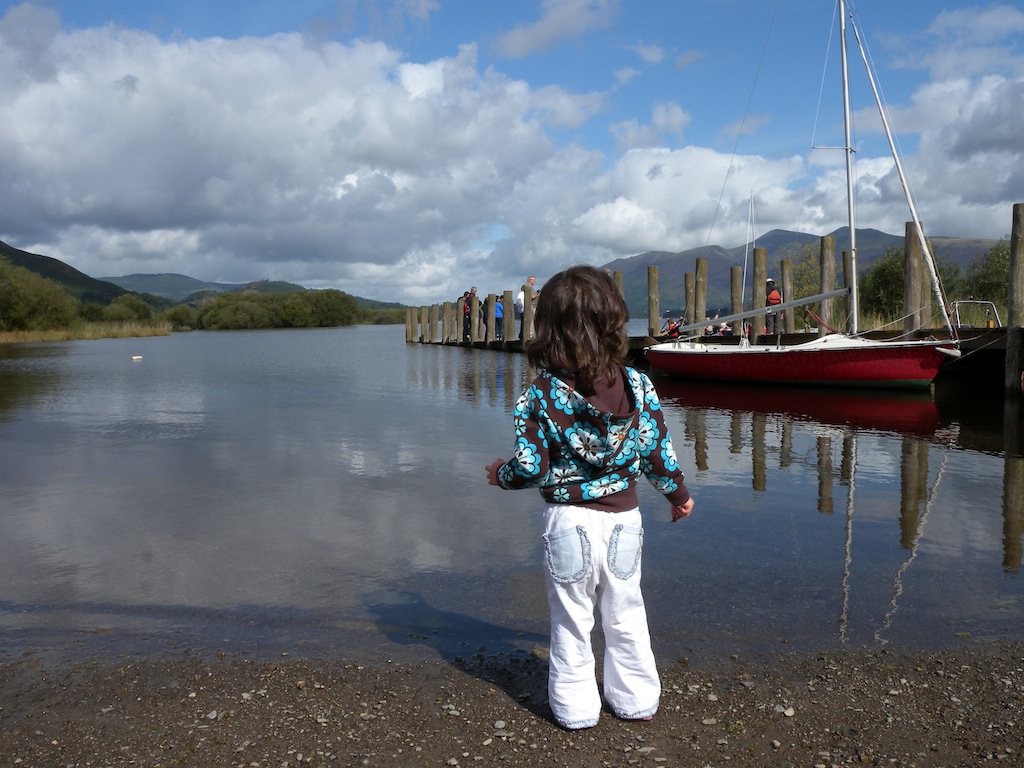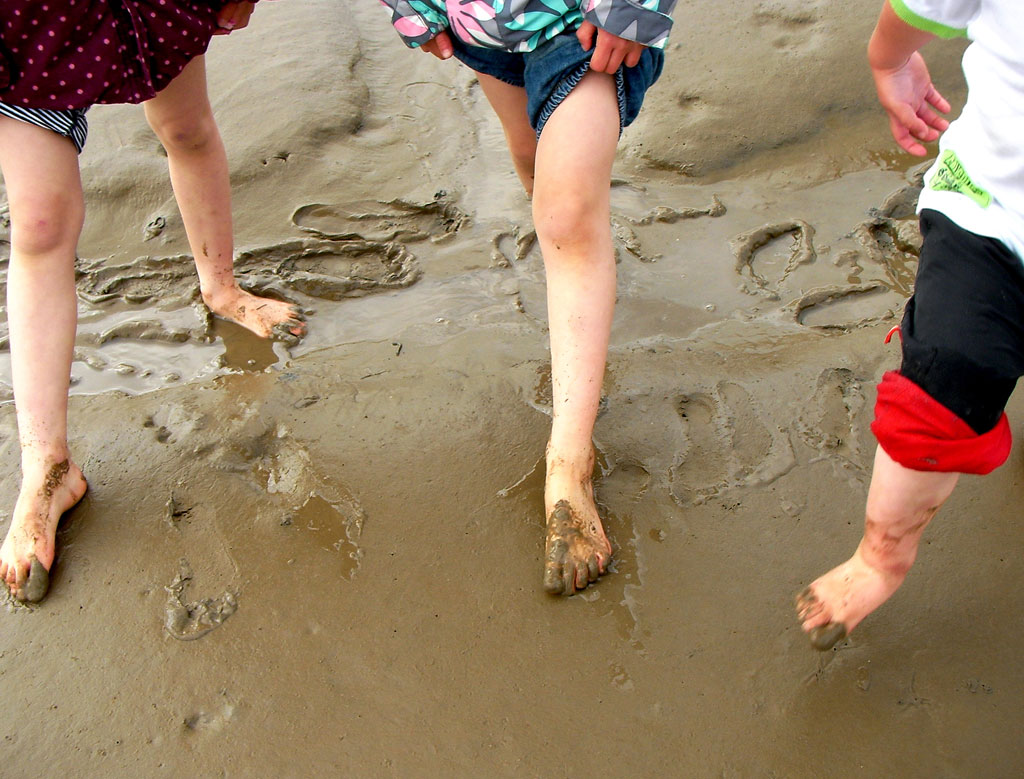They are rural retreats – a remote Shangri-La away from the madding crowd.
The numerous small islands off the British coastline offer a glimpse of life at different pace.
We discover some of the best island escapes around the UK.
Brownsea Island, Dorset
It has been used as a daffodil farm, a pottery works and a decoy to protect Poole during the Second World War.
Two-thirds of the island was burnt in 1934 and, from 1927-1961, the island was owned by Mrs Bonham-Cristie, who let the island become a virtual wilderness.
On her death it was bought by the National Trust and today this island nature reserve is an ideal natural setting for walks, picnics and wildlife – look out for the rare red squirrels.
Brownsea Island is the largest island in Poole Harbour with half-hourly boat services running from Poole Quay and Sandbanks throughout the summer.
The island offers superb views across to Studland, Old Harry Rocks and the Purbeck Hills, while the natural habitat offers the run of pinewoods, heathland and lagoons where breeding birds collect.
Most of all, Brownsea is known worldwide as the birthplace of the Scout and Guide movement after Robert Baden-Powell held the first ever experimental Scout camp here in 1907.
www.nationaltrust.org.uk/brownsea
Silver Holme, Cumbria
Following the recent release of the film Miss Potter, starring Renée Zellwegger as the author Beatrix Potter, there has been a boom in literary tourism to the Lake District.
But this is nothing new. The islands of Lake Windemere, England’s largest lake, have provided inspiration to Britain’s literary heavyweights for centuries with references dating back to Wordsworth’s poem The Prelude.
Today Silver Holme, located about 50m from the western shoreline, may look like just a rather nondescript lump of rock for nesting wild fowl and birdlife.
It is, however, the best known of the lake’s 14 islands as being the inspiration for Wildcat Island in Arthur Ransome’s Swallows and Amazons books. Ransome himself is buried at nearby Coltin Parish Church.
All but one of Windemere’s islands has open access and boats can be hired from charter companies in Bowness Bay; the cruise boats on Windermere also stop at the island.
Flat Holm, Bristol Channel
This island sanctuary off the coast of southeast Wales is rich in wildlife and historical lore.
Located just five miles from Cardiff in the busy shipping lanes where the Bristol Channel meets the Severn estuary, boat trips depart from Barry Island Harbour for the 30-minute journey from March through to October.
Flat Holm’s first incarnation stems from the Dark Ages, when it was a retreat for monks. Since then it has been the domain of silver miners, smugglers and cholera victims. It is perhaps best known, however, for receiving the first ever radio message across water sent by Marconi in 1897.
Today, 500m in diameter and totally flat, Flat Holm is a site of special scientific interest and a local nature reserve at the most southerly point in Wales.
It is home to one of the largest colonies of gulls in Wales plus a summer carpet of rare and exotic wild flowers.
Visitors are warned to wear a hat to ward off the defensive dive-bombing of the gulls during breeding season.
For local residents, the iconic image of Flat Holm is its lighthouse, which was first lit on December 1st, 1737, following a tragic accident in 1736 when sixty soldiers were drowned and their vessel wrecked near the Holm.
This has steered sailors through the perils of the Bristol Channel ever since with Trinity House responsible for its upkeep since 1823.
www.flatholmisland.com
Eel Pie Island, London
Nestled amongst the twists and turns of the River Thames are a handful of highly salubrious island getaways with a surprisingly colourful past.
The most rock n’ roll of these is, without doubt, Eel Pie Island, which is tucked inside the Thames at Twickenham.
Formerly known as Twickenham Ait, it has been connected to the London borough of Richmond since 1957 by a footbridge.
Today the island has a population of around 120 people and nature reserves at either end. It is home to Twickenham Rowing Club, one of the oldest rowing clubs on the Thames, and a community of artists.
Its biggest claim to fame, however, is as a hotbed of musical heritage.
The Eel Pie Studios, owned by The Who guitarist Pete Townshend, provided the location for the recording of numerous rock albums. The Eel Pie Island Hotel was a major venue for Britain’s burgeoning rock scene in the late 1960s with the likes of The Yardbirds, Pink Floyd and The Rolling Stones all taking the island by storm.
The hotel met a sad demise in a fire in 1971, but the island’s infamy lives on in the stories, poems and songs of the musicians who played there.
www.eelpieislandartists.co.uk
Alney Island, Gloucestershire
Around one mile from the centre of Gloucester, where the River Severn splits, Alney Island Nature Reserve is a wetland area within spiting distance of an urban centre.
The island boasts traditional wet grassland and marshy areas that attract all sorts of wildlife, such as buzzards, kestrels and grey herons.
All this is a far cry from the original use of the land: Gloucester’s original 1.5-mile racecourse.
The races were regularly held here until 1839 and, at the time, the course was deemed far superior to the one at Cheltenham, which today dominates the local racing scene.
At the peak of racing fever, campaigners handed out leaflets to the crowd warning of the dangers of gambling and drinking, while police reinforcements and plain-clothes detectives were called in from Birmingham and Bristol.
Today it’s a more tranquil location with guided nature walks in summer taking in the natural attractions – book through the rangers office. In particular, it island offers a rare opportunity to spot wading birds.
www.gloucester.gov.uk
Inchmurrin Island, Loch Lomond
Inchmurrin is the largest inland island in Britain and the most southerly on Loch Lomond.
Located just thirty minutes from Glasgow and a short ferry crossing from Midross, it has been privately owned by the Scott family for the past 70 years. Open access ensures, however, that walkers and birdwatchers are welcome to visit this lost-in-time rural idyll.
The island is steeped in history with its roll call of visitors, according to legend, including Scottish folk heroes Robert the Bruce and Mary Queen of Scots.
The ruins of a 7th-century monastery and Lennox Castle can still be visited, but today there’s a population of just 10 residents, plus beef cattle, goats and pheasants.
The most evocative way to visit the island, however, is by taking the Mailboat, which delivers mail to four islands on the Loch – Inchtavannich, Inchmurrin, Inchcruin and Inchfad – every day during summer, except Tuesdays and Sundays, and less frequently in winter.
The mail service since been a fixture of life on the Loch since 1948 and riding the boat out amongst the tranquil waters is like stepping back in time.
www.lochlomond-trossachs.org
Derwent Island, Cumbria
The largest and only inhabited island on Derwentwater [pictured above], Derwent Island is a reclusive place open to the public for just a few days each year.
Those lucky enough to enjoy an exclusive visit have access to the 18th-century house, which is managed by the National Trust and set in an idyllic woodland setting.
The island has a varied history ranging from the 12th century, when it was owned by Fountains Abbey as part of their Borrowdale estate, to being sold it in 1778 to Joseph Pocklington of Nottinghamshire, one of the first men of wealth to settle in the Lake District for its scenic beauty.
He named it Pocklington’s Island and built a giant, elaborate villa, which moved Wordsworth himself to ridicule the building as “A warren-house reared upon an eminence for the detection of depredators.”
Access to the island is by boat on timed ticket only. It’s a rare opportunity to visit a local legend.
www.nationaltrust.org.uk/article-1356397015261/
Carsington Water, Derbyshire
The valley now filled by the Carsington Reservoir dates back to around 2000 BC with archaeological excavations uncovering flints and knives from the Bronze Age.
Carsington Water was officially opened by the Queen in 1992 and has gone on to become one of Derbyshire’s most popular tourist attractions for its family-friendly ethos and sense of discovery.
Connected to the mainland by a causeway, Carsington Water now features several elements around the central reservoir.
Stones Island, erected in 1992, follows in the long tradition in Derbyshire of hill-top monuments with a series of contemporary monoliths which have holes to offer different views across the island.
Close by is a wildlife centre from where you can study Carsington’s varied birdlife, while along the bankside towards Carsington village are three bird-hides where you can spot nesting bird species.
For walkers, bikers and horse riders there is a circular path around the conservation villages of Carsington and Hopton, while anglers and sailors are common place on busy summer weekends.
www.visitpeakdistrict.com/Carsington-Carsington-Water-/details/?dms=3&venue=6011742
Lundy Island, Devon
Located in the Bristol Channel, about 11 miles off the coast of North Devon, Lundy Island is a granite outcrop rising 400 feet above sea level.
Unlike some other islands, however, this place has both a life of its own: a 13th-century castle, a Victorian church, shop, pub and a population of about 18. You can even buy Lundy stamps as proof of your visit.
The island is best known as a marine conservation area and remains a haven for nature lovers with communities of migratory seabirds and seals. Popular activities include climbing, walking and bird watching.
You can also stay on the island in a holiday cottage administered by The Landmark Trust, which manages the island. Properties range from a stone cottage that sleeps just one person to a lighthouse and a converted pigsty.
During summer months the island enjoys good connections to the mainland with regular boat services from Bideford or Illfracombe, a journey that commands breathtaking views of the North Devon coast.
A helicopter service also operates from Hartland Point for a quick lunch stop with a difference.
www.landmarktrust.org.uk/Lundyisland/
* This story was first published by Forward Publishing in 2007. Liked this? Try also Meeting the king of Cumbria’s Piel Island.
Post your comments below.

